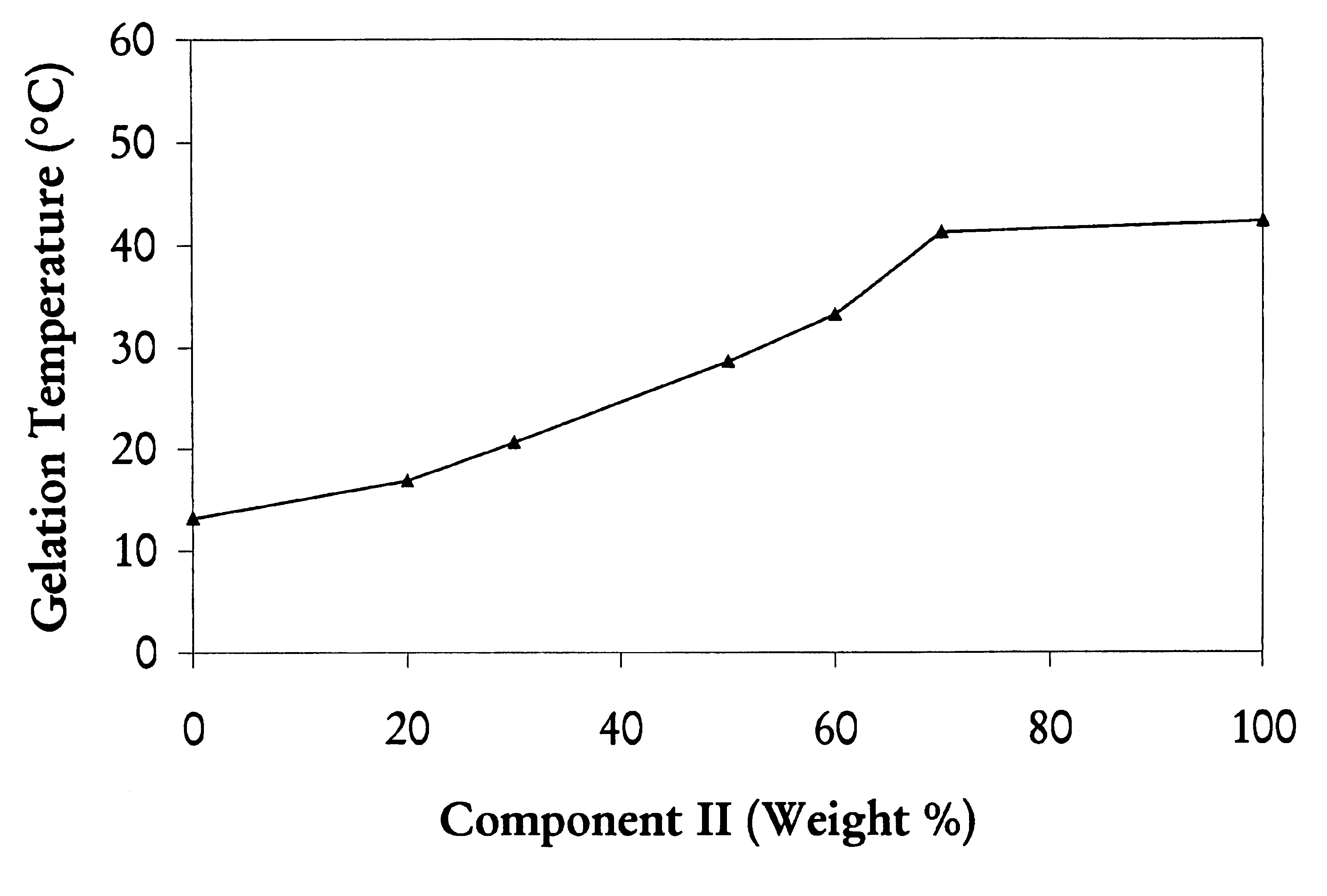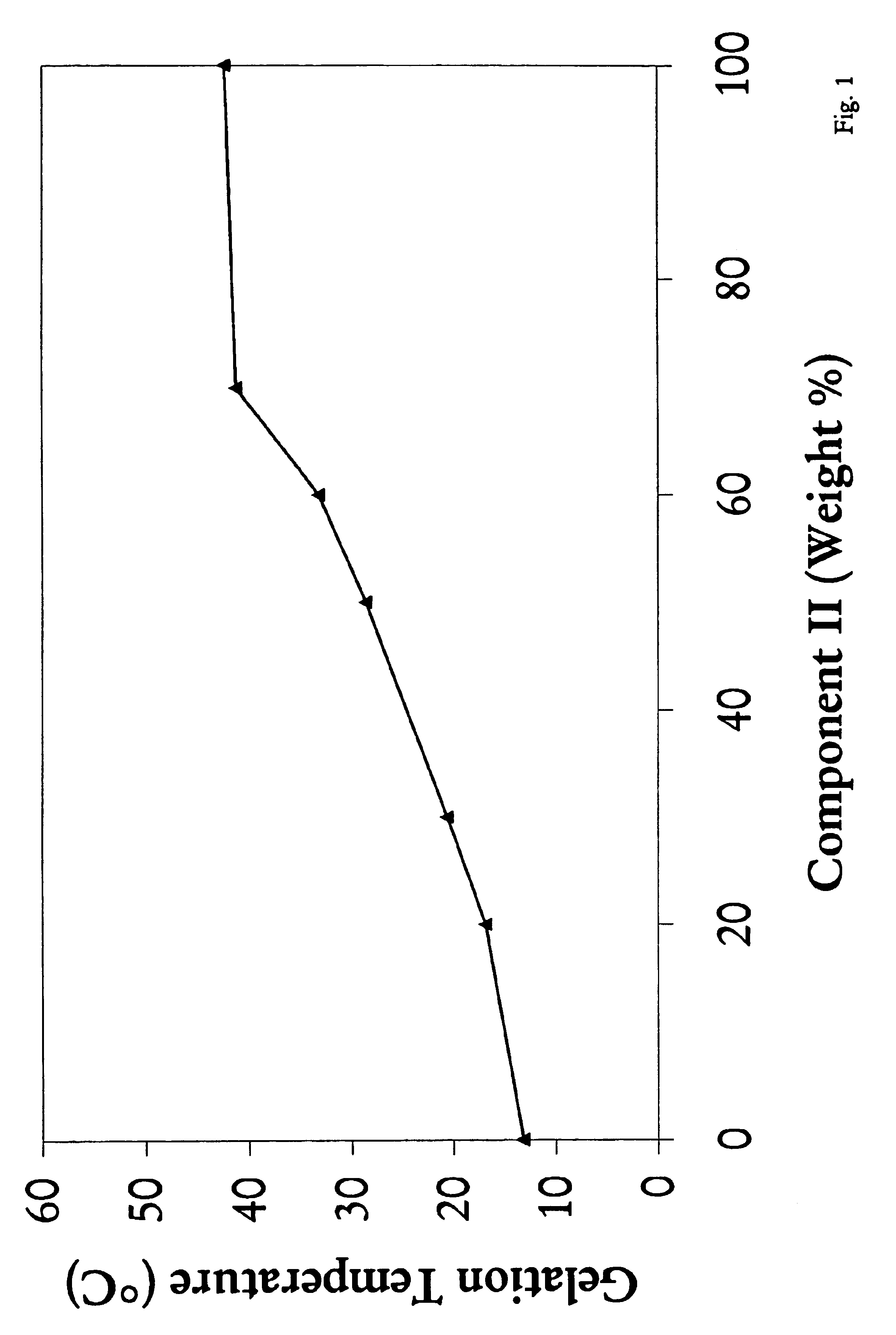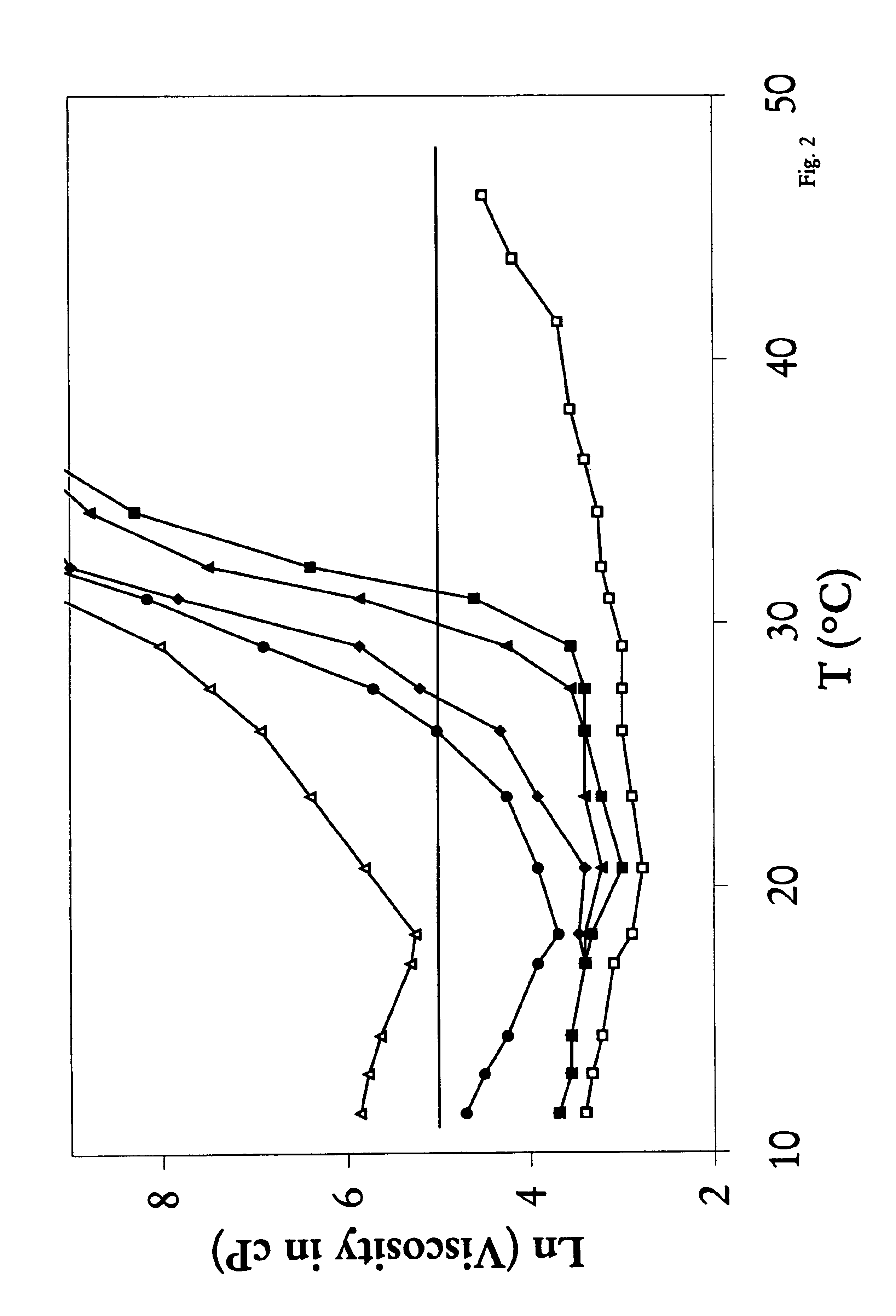Mixtures of various triblock polyester polyethylene glycol copolymers having improved gel properties
a polyester polyethylene glycol and polyethylene glycol technology, applied in the direction of prosthesis, peptide/protein ingredients, contraceptive devices, etc., can solve the problems of additives not being compatible with the drug to be delivered, poor patient compliance, and molecule resistance, so as to optimize the therapeutic effect, the effect of reducing the risk of toxicity
- Summary
- Abstract
- Description
- Claims
- Application Information
AI Technical Summary
Benefits of technology
Problems solved by technology
Method used
Image
Examples
example 1
Synthesis of PLG-PEG-PLG Tri-block Copolymers
[0059]The synthesis process utilized in this example is generally disclosed in U.S. Pat. No. 6,004,573 and is hereby incorporated by reference. Poly(ethylene glycol) (PEG-1000; 29.4 gram) was weighed and-transferred into a 250-mL 3-neck round bottom flask. The flask was attached to a vacuum line (1-2 torr) and immersed in an oil bath. Residual water was removed by raising the bath temperature to 155° C. for 3 hours. The flask was raised and allowed to cool to about 80° C. D,L-lactide (55.65 gram) and glycolide (14.95 gram) were weighed and added to the flask. The headspace of the flask was replaced by dry nitrogen and heating resumed (130° C.) until the lactide and glycolide were melted. Polymerization was initiated by addition of 0.02 g of stannous octoate dropwise over a one minute time period. The reaction mixture was heated at 155° C. for an additional eight hours. Monomers were removed by vacuum (1-2 torr) for ca. 2 hours and the res...
example 2
[0060]This example was done by following the procedure described in Example 1 but using 37.74 gram of poly(ethylene glycol) (PEG 1450), 49.1 gram of D,L-lactide and 13.18 gram of glycolide in the synthesis. Molecular weight of the resulting triblock copolymer was determined by gel permeation chromotograph to be 4610 Daltons. A 23% by weight aqueous solution of the synthesized polymer was soluble in cold water and gelled at 42.3° C.
example 3
[0061]This example illustrates a method for making a triblock copolymer mixtures with various selectable reverse thermal gelation temperatures by mixing two pre-made individual triblock copolymer solutions. Tri-block copolymers prepared by the method described in Example 1 (Component I) and Example 2(Component II) were dissolved in water to form 23% by weight solutions. These two solutions were mixed and gelation temperatures were measured. As illustrated in FIG. 1, the gelation temperature of the mixture of Component I and Component II triblock copolymers rises from about 13° C. (100% Component I) when the content of Component II in the mixture increases, up to 42° C. when the content of Component II triblock copolymer reaches 100%.
PUM
| Property | Measurement | Unit |
|---|---|---|
| molecular weight | aaaaa | aaaaa |
| molecular weight | aaaaa | aaaaa |
| molecular weight | aaaaa | aaaaa |
Abstract
Description
Claims
Application Information
 Login to View More
Login to View More - R&D
- Intellectual Property
- Life Sciences
- Materials
- Tech Scout
- Unparalleled Data Quality
- Higher Quality Content
- 60% Fewer Hallucinations
Browse by: Latest US Patents, China's latest patents, Technical Efficacy Thesaurus, Application Domain, Technology Topic, Popular Technical Reports.
© 2025 PatSnap. All rights reserved.Legal|Privacy policy|Modern Slavery Act Transparency Statement|Sitemap|About US| Contact US: help@patsnap.com



